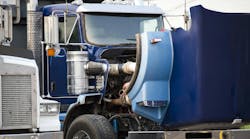Fleet owners have more options than ever for spec’ing transmissions—manuals, automatics, and automated manuals. But constant-torque automatics like those from Allison offer an advantage in many truck applications, according to Steve Spurlin, recently named executive director of 3000/4000 Series & application engineering for the manufacturer.
At a recent customer ride-and-drive event at Allison headquarters in Indianapolis, Spurlin told FleetOwner that a key advantage of an automatic is that “unlike a manual or even an automated manual, an automatic does not have to ‘interrupt’ the power curve to make shift changes, which results in greater productivity for the vehicle.
“You are not losing the power to the wheels [during shifting],” he continued. “Power has to ‘drop out’ when a manual or automated manual shifts. But with an Allison, the power remains smooth throughout.”
He said this benefit is very advantageous, particularly for traction in on/off road applications, as well for the steady operation of all types of trucks in start-and-stop traffic. “This is well recognized in some vocational markets, including refuse and fire trucks, and it applies as well to other applications, such as heavy dump trucks and other construction vehicles as well as P&D trucks.”
Spurlin noted that in P&D service, an automatic enables drivers to keep up with traffic and this “can reduce the number of deliveries need per day—and may even allow a fleet to operate with fewer trucks overall.” He added that automatics also increase driver comfort and result in fewer driveline repairs for all applications.
“We also offer different shift calibrations for each transmission model—some 30 to 40 different possibilities for each governed speed of an engine,” he pointed out. “If the truck’s duty cycle and resulting performance requirements allow it, earlier shifts [can be calibrated] to improve fuel economy.
“For all calibrations, there is a performance and a fuel economy mode. A driver can change the mode as required by hitting a button on the shift selector,” Spurlin continued. “That’s a standard feature on most of our [model] releases but a fleet can choose to have this feature set up so that it defaults to economy mode. We preached ‘performance, performance, performance’ [of automatics] for years,” he added, “but things have changed and now fuel economy is a bigger factor.”


